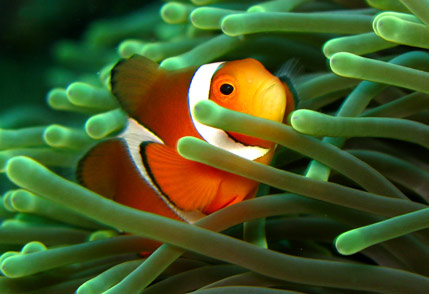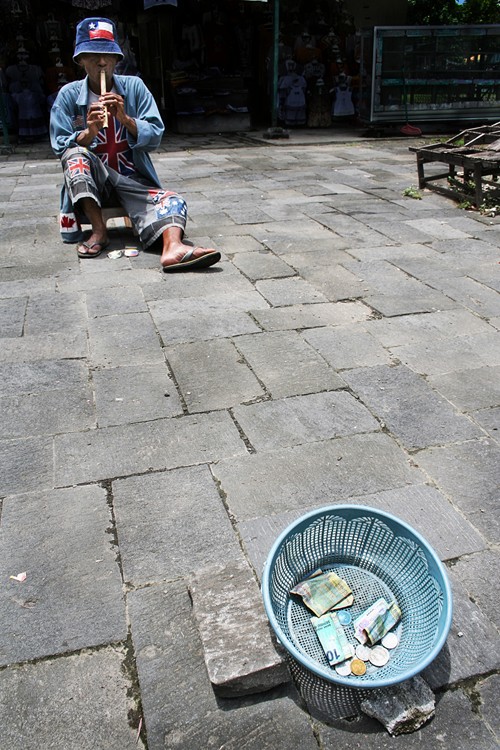
Photographing a subject that’s inside an aquarium, such as fish, can be difficult. Limited lighting and the ever-moving fish are challenges you’d have to face when trying to photograph.
The following are a few tips for producing a successful photograph:
1. Determine the correct exposure and white balance
Our cameras usually choose an exposure that’s too bright or too dark when faced with this sort of circumstance because it’s affect by the color of the fish or the background. So it’s best if you use the Manual mode and manually set the exposure, or you can use the exposure compensation function (set to be under-exposed or over-exposed) if you use the P,A/Av, S/Tv Modes. To ease the process of setting the correct exposure when in Manual Mode, you can activate the Live View feature of your camera (if available). By using Live View, the results of the current aperture setting can immediately be viewed on the LCD screen.
When photographing aquariums, camera will produce a photograph that has too much of a blue tint. To get a neutral photograph, you’ll have to set the WB accordingly. You can lessen the effect of the blue tint by setting the WB at fluorescent or you can manually set the Kelvin value of your WB to your desired tone.
2. Set the appropriate ISO
Photographing fish in aquarium usually happen indoors; therefore it’s often under low lighting. Don’t forget to use a high ISO in order to get a high enough aperture speed. A moving object like a fish needs a shutter speed of around 1/80 to 1/125 to avoid blurs.
3. Use lenses with wide apertures
If you have wide aperture lenses such as the 24-70 mm f/2.8 or the 50 mm f/1.8, then you’ll be able to take advantage of these wide apertures to achieve a blurry background also known as bokeh while also being able to absorb more light into the photo. On the other hand, if you want the whole fish and background to be sharp, then you can use a narrow aperture such as f/8.
4. Avoid using flash
The aquarium glass will reflect a portion of the light emitted by the flash into the lens, making the photograph seem unnatural and too bright.
5. Light reflection
Be careful when composing your photograph. Pay attention to the light reflections from the aquarium lamps or the room’s lamps. Make sure that the reflection does not interfere with the main subject. Any unwanted reflections can be avoided by shooting at a good angle.
6. Find a simple background
Avoid busy backgrounds and disrupting sceneries (such as the aquarium’s water hose, or any man-made aspect of it). If unavoidable, use a wide aperture lens and get closer to the aquarium; or use a telephoto lens. The wide aperture lens and the getting closer to the aquarium technique (or using a telephoto lens) is to ensure a narrow DOF (depth of field). This will make the background looks simpler. For more information, consult my other post on how to set and control the depth of field.
7. Patience
Observe the movement of your subject. Be patient and wait for the perfect moment to press the trigger button.
8. Focus
The camera’s autofocus may have some difficulty in locking in the focus point when trying to focus on a moving object. If your camera often fails at finding the correct focus, then use the manual focus. Though it’ll be more difficult in the beginning, with a little practice, the manual focus can prove to be your friend. Good luck!

Recommended Product:
















